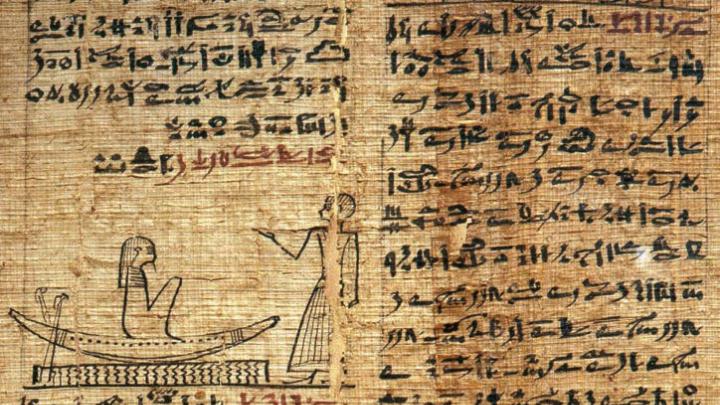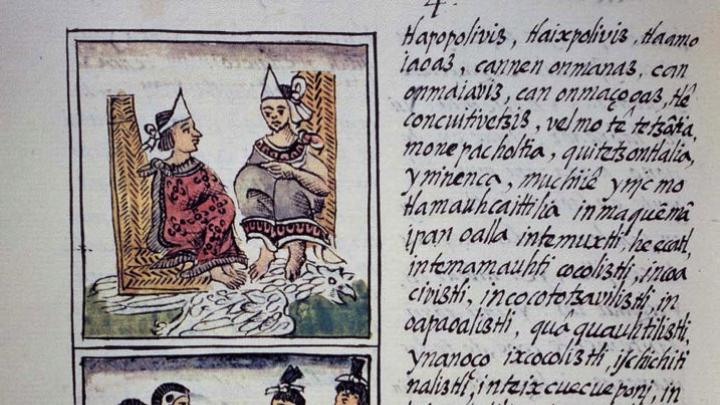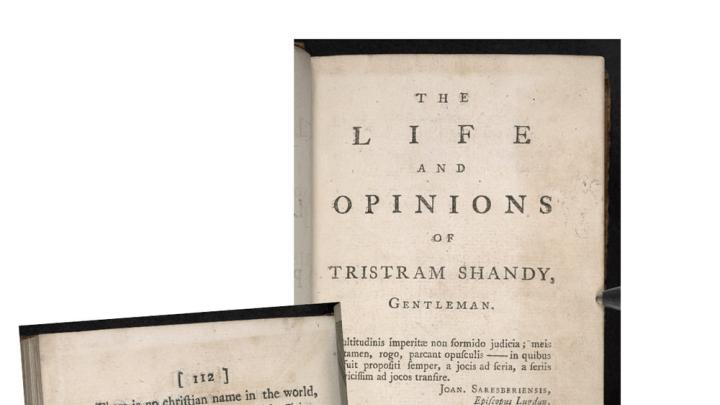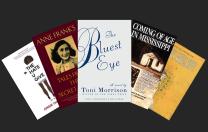The résumé of Harvard’s Bernbaum professor of comparative literature might create the impression that “comp lit” means “the study of any literature from anywhere, ever.” At various points in his career, David Damrosch has written about the epic of Gilgamesh, the Hebrew Bible, the Sanskrit verse dramatist Ka-lida-sa, visions of medieval Belgian nuns, Aztec poetry, Kafka, the Chinese intellectual Hu Shih, the anthropologist Claude Lévi-Strauss’s Tristes Tropiques, and the oral autobiography of K’iche’ Guatemalan Nobel laureate and activist Rigoberta Menchú. Most scholars define themselves as specialists in one or two centuries of one or two regions; Damrosch’s work across time and space makes him an outlier. He says he tells people, “I work mostly on literature between roughly 2000 and 2015. But ‘2000’ means 2000 b.c.e.”
He is best known for his advocacy of “world literature,” which he defines in his (sensibly titled) 2003 book What Is World Literature? as “all literary works that circulate beyond their culture of origin, either in translation or in their original language.” This does not mean all literature ever created: some stays within the culture and language that produced it, and never leaves. World literature happens when Russian novels remake English literature; when a Turkish writer takes inspiration from a Colombian writer; when Japanese critics review translations of Lebanese poetry. It almost always involves re-interpretation and misunderstanding: a Spanish monk sent to suppress Aztec literature ended up disseminating it instead; subsequently, Aztec hymns envision a Christian God urging revolt against the Spaniards. World literature is also nothing new under the sun: Damrosch’s first book, Narrative Covenant, is about the influence of a range of Mesopotamian literatures from the first millennium b.c.e. on the composition of much of the Bible.
The field first gained traction in American universities around the turn of this century. Damrosch’s book appeared within a few years of works by two other scholars commonly tied to the concept: the late Pascale Casanova’s The World Republic of Letters and Franco Moretti’s article “Conjectures on World Literature.” Though their individual views differ, the three are often seen as the center of the new global focus in comparative literature. But Damrosch emphasizes that he doesn’t want world literature seen as a purely academic notion. “One of the things that’s interesting about [it] is that it didn’t come from elite graduate schools and percolate down, the way literary theory had,” he explains. “It’s much more bottom-up—from K-12 schools and community colleges, because they’re having these influxes of people from around the world, and they wanted to reach them. So they started teaching world-literature courses.”
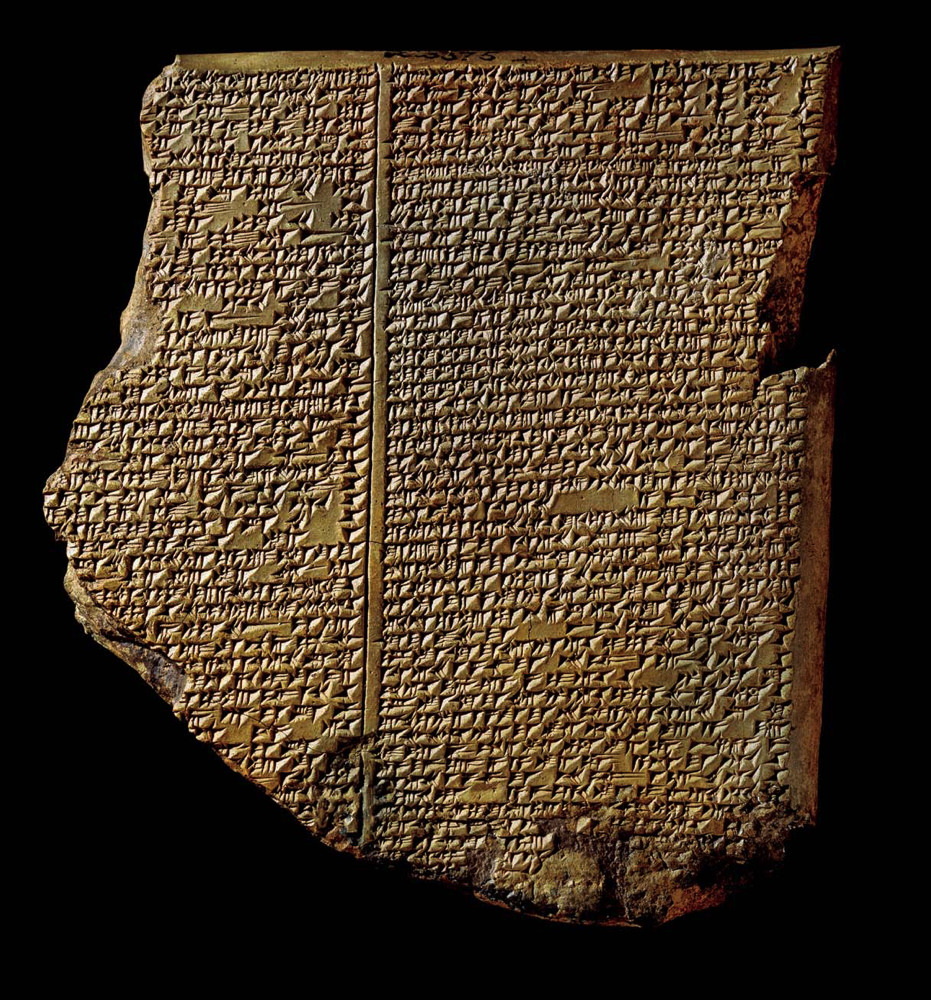
The “Flood Tablet” of the Epic of Gilgamesh, recounting the gods’ plan to destroy the world in a flood. The epic’s oldest parts date to the twenty-second century b.c.e.; this tablet is a copy made in the seventh century b.c.e.
Photograph © the British Museum/Trustees of the British Museum
He also doesn’t want to be taken as a central figure in a movement, stressing that a lot has happened in the field since his 2003 book. He wishes other literary scholars would pay greater attention to studies of world literature more recent than his own, as well as work by scholars outside the old European imperial languages (English, French, Spanish, German). “If you’re writing in English or French, you’re going to get more attention than if you’re writing in Slovakian,” Damrosch notes. “We really need to look at work that’s being done in Italian, Chinese, Korean, Japanese, and in Eastern Europe—in translation if we can’t read it in the original—and we need to be getting more translations of things that aren’t translated...One of the things world literature has to talk about is its own uneven playing field.”
Damrosch’s writing, teaching, and conversation heighten the contrast between how much literature exists in the world, and how little of it reaches even voracious readers. You may have read the great twentieth-century writers in English, but what about those who wrote in Urdu or Albanian? You may enjoy the nineteenth-century novel, but what about the poetry of eighth-century Persia? “North American audiences, especially in the United States, tend to be quite provincial—a kind of great-power provincialism, paying little attention to the rest of the world and poorly understanding it,” he reflects. “If the history of literature runs roughly 5,000 years, a lot of the time we just read work from the last 50 or 100 years, which is the most recent 2 percent of the history of literature.” He wants to encourage readers to engage with the other 98 percent—“these earlier periods that tell us a lot more about the world.”
Such ambitions may sound unreachable; critics inside the field worry they can collapse into dilettantism. Damrosch counters that even though no one can read everything (“I’ve tried—and failed completely!” he admits cheerfully), he wants to expand readers’ sense of the dimensions of the literary universe. His own work is littered with odd couples: Vladimir Nabokov’s Russian translation of Alice’s Adventures in Wonderland is invoked to make sense of ancient Egyptian love poems; Kafka’s fiction sheds light on P.G. Wodehouse’s. He believes ranging even a little more widely beyond one’s own era and language can in fact improve appreciation for and understanding of one’s home turf: “If you’re interested in a particular period and a particular literature, if you can test it against some knowledge of what’s outside, then you can understand better what’s in the system you’re interested in.”
The urge to push outward is, by his account, deeply dyed into his character. He grew up in Maine, the child of Episcopal missionaries who had returned to the United States after being interned by the Japanese in the Philippines during the Second World War. (Damrosch’s older brother, Leo, is Bernbaum research professor of literature emeritus at Harvard.) The family moved to New York City as Damrosch entered high school; he enjoyed having regular access to the Metropolitan Museum (where he developed a fascination with ancient Egypt) and attending a prep school that encouraged his ambitions: “In ninth grade, my English teacher gave me a copy of Tristram Shandy by Laurence Sterne—a great eighteenth-century novel, which was the first novel for real grown-ups that I had read. I thought it was hilarious and wonderful, and said, ‘Well, I want to read more like this.’ Tristram gives his life and opinions, and he says that his favorite authors are ‘my dear Rabelais and my dear Cervantes.’ I didn’t know who those people were, but I thought, ‘If he likes them, I should like them!’ So then I got the Penguin Classics of Gargantua and Pantagruel and Don Quixote, and I read those. I really liked those, so I said to myself, ‘Well, I like these hilarious satirical works, so what else can I read?’ At the back of the Penguin Classics there were these other books; I see this book called the Divine Comedy, so I went, “Oh, I should read that!” I soon found it wasn’t quite the knee-slapper that I thought it was. But one author led me to other authors, and then the publisher led me to other books, and that had already brought me to Europe.”
He also mentions two children’s writers as influences on his early years: Madeleine L’Engle (who was one of his father’s parishioners in Manhattan) and J.R.R. Tolkien—both builders of elaborate fantasy worlds spread across many volumes who reveled in the abundance of languages, real and fictional. “Gandalf is a philologist! And of course Tolkien was a philologist…I was totally into that idea of a world with a deep history and many cultures, languages, and even ways of writing.”'
“Arabesques around the literary tradition”
The breadth of works on which Damrosch draws seems even more expansive in light of comparative literature’s continuing focus on European and U.S. works when he began graduate school at his alma mater, Yale, in 1975. The department required proficiency in French, German, and Latin before allowing students even to begin the program. (He recalls that at the time he felt as if half his fellow students were writing theses on Henry James.)
That focus reflected in part the impact of the Second World War. In its wake, reconstructing the idea of a Europe that was more than the sum of its nations held great moral urgency for comp-lit researchers. Many of the field’s most prominent scholars were Europeans, often Jewish, who had fled the war. Erich Auerbach’s landmark 1946 book Mimesis, still regarded as a monument within comparative literature, is subtitled “The Representation of Reality in Western Literature,” but 13 of its 20 chapters cover Italian or French literature—a very small West, and certainly not the globe. Damrosch mentions that when Conant University Professor emeritus Stephen Owen, a scholar of Chinese poetry, applied to doctoral programs in comparative literature in the late 1960s, he was turned away, despite knowing a dozen languages, because he wanted to work on Chinese, and that simply wasn’t done. (Owen had the last laugh, becoming one of Damrosch’s predecessors as chair of Harvard’s comparative literature department.)
Yet the idea of a “world literature” encompassing the entire globe had first gained currency a century before. Most scholars, including Damrosch, date the first use of that term to 1827, when Johann Wolfgang von Goethe started invoking Weltliteratur in conversations with friends and followers: “National literature is now a rather unmeaning term,” he opined; “the epoch of world literature is at hand, and everyone must strive to hasten its approach.” Goethe could talk about Horace (Latin) alongside Hafiz (Persian) and compare one of his own novels to fiction from England and China. His conception had its limits: distinctly elitist, distrustful of any kind of popular taste, and convinced of the existence of separate national characteristics underpinning the greater Weltliteratur. But it contrasted with the traditional way of studying literature one language at a time—as though French existed in a separate box from German and the two traditions never interacted.
The national approach nevertheless won out for most of the following century, as the modern research university consolidated and tended to organize the study of literature into language families—classics, Romance, Germanic, Slavic, et cetera—with scholars usually specializing in a single language. The idea of comparative literature gained currency after the 1886 publication of a foundational work by H.M. Posnett; it made sense as a kind of reaction or complement to the language-family model. Departments of comparative literature arose, but Goethe’s elitist notion of a world literature, with Horace and Hafiz considered side-by-side, lay mostly dormant.
By the 1970s, comparative literature, especially at Yale, tended to be concerned with the shape of literature abstracted from historical context. The field emphasized formal and linguistic consideration of works of literature as grounds for building general theories of how literature creates meaning, built almost entirely on studies of modern European works. At the time, many schools of thought within comp-lit were almost proud of their lack of interest in authors’ lives and literary history.
Damrosch, however, focused on Egyptian, Biblical Hebrew, Old Norse, and Nahuatl. (He currently works in 12 languages.) Hearing him account for his linguistic development sounds like Friday at Babel (“Once I started studying Nahuatl, I realized I needed Spanish just to deal with dictionaries… One of my teachers said, ‘If you like Middle High German, you’d love Old Norse!’ So I did...”). He spent a lot of time in the very different intellectual climate of Yale Divinity School (for a time, he had considered entering a seminary), which encouraged an interest in historical context. These factors sometimes set him at odds with the comp-lit department. “My director of graduate studies one year warned me that some hiring committees might think I was only doing ‘arabesques around the literary tradition,’” he remembers. “I thought that was an interesting phrase: first of all, the idea that there was one single literary tradition; and second of all, ‘arabesques’ sounds sort of orientalist, as if I should have been doing Judaeo-Christian-esques within the tradition.” For a while, he considered other careers; uncertain of whether he would find a faculty job in the same city as his wife, the legal scholar Lori Fisler Damrosch, he interviewed for the Foreign Service and was briefly a speechwriter for President Jimmy Carter’s drug czar. Ultimately, he submitted an eclectic dissertation on ancient Egypt, the Midrash, and James Joyce’s Finnegans Wake (the topic was the use of scripture as a basis for fiction), and started teaching at Columbia after earning his doctorate in 1980.
“Comparatists were always trying to save the world”
Discerning Damrosch’s specialties from his publication record can be difficult, but he says he continues to feel most at home in two fields: English literature, and that of the ancient Near East (Egypt, Sumer, Assyria, Israel). At Columbia, English and comparative literature have been technically one department since 1910, so Damrosch enjoyed more freedom than he might have if he had ended up in, say, a department of Egyptology. During the next 20 years, he wrote a characteristically broad range of articles, and two very different books—a monograph and a quirky campus novel of ideas—on academic culture and the humanities.
This was an edgier version of world literature,far more attuned to power and inequality, inflected by the new critical vocabulary of interactions among diasporic communities, postcolonial nations, and former empires.
Around the same time, as the academic conversation on multiculturalism and curriculum change accelerated, Goethe’s old term “world literature” began to reappear with transformed meaning. It no longer meant an aristocratic klatsch of literary elites, each representing a national language. It also aimed to avoid being a sort of Cold War-era “United Nations bookshelf” with a masterpiece from each country. Instead, it served as an analytical lens that could cover old forms of international exchange as well as new kinds of interactions among diasporic communities, postcolonial nations, and former empires. This was an edgier version of world literature, far more attuned to power and inequality, inflected by the critical vocabulary of the previous two decades.
Damrosch began to publish on the subject in the mid 1990s, leading to What Is World Literature? in 2003, followed by How to Read World Literature in 2009, as well as a pair of edited books, Teaching World Literature and World Literature in Theory, that included various colleagues’ views of the subject. But he may have exerted his widest influence as editor of the Longman Anthology of World Literature, which attempts—in about 3,500 pages—to build a history for roughly four millennia of literature and four continents, dropping off around the year 1700. The anthology is at its most striking when it makes accidental neighbors between its regional sections: Paradise Lost sits next to the Mayan Popol Vuh, the Malian Epic of Son-Jara between Beowulf and the Persian Shahnameh (Book of Kings).
This quality of chronological and geographical vertigo has provoked keen criticism from other comp-lit scholars, as well as from national-language and area-studies departments. Arguments differ, but the most prominent concern reflects fear of a kind of “Epcot lit”—raiding the globe for raw material that can be processed and presented (at a profit) to readers and students, mainly in the United States and Europe, to reassure them of their cosmopolitanism and broad-mindedness. Emily Apter, Silver professor of French and comparative literature at New York University, makes the case in her 2013 book Against World Literature that the concept can lead students to underestimate the true extent of cultural and linguistic differences, particularly by teaching texts in translations that conceal or omit deep difference in cultural outlook. Aamir Mufti, professor of comparative literature at UCLA, contends that the only ethically viable form of world literature must confront the worldwide history of “relations of force and powers of assimilation and the ways in which writers and texts respond to such pressures.” Reading Paradise Lost and the Popol Vuh in the same way risks either understanding neither, or else reading the latter in a way that scrubs away the distinctiveness of the society that produced it and its modern descendants.
Comparative literature is a small world; Apter edited the series that published Damrosch’s What Is World Literature? and has served as a board member for the Institute for World Literature, as well as a keynote speaker; Damrosch’s enthusiastic blurb for Mufti’s book Forget English! calls it “a vital contribution at the intersection of postcolonial, comparative, and world literary studies.” At times, he seems almost eager for the chance to agree with his critics, or at least meet them halfway. Mariano Siskind, professor of Romance languages and comparative literature at Harvard, who has taught at multiple sessions of the Institute for World Literature (which Damrosch directs, see “Enlarging the Field”), says that his colleague “understands how important it is to create a space that is open to a wide diversity of positions from which to study or address world literature as a scholarly critical problem.”
Damrosch has often described the intersections where different cultures’ literatures meet as the overlapping space between two ellipses, one representing literature’s life in its home culture, the other outside; in retrospect, he says, “I agree with the critiques that say too often it looks as though these ellipses are all on a level playing field, and it’s just a happy merger. Which I think to some degree may be true—for the individual reader, what you read comes into your mind and can coexist. But it’s also true that what’s able to come into your mind is not merely your choice. So much depends on cultural, political, and economic factors that thinking critically about those ellipses—the capitalist system that creates them, and the colonial heritage and other politics behind them—is very important.”
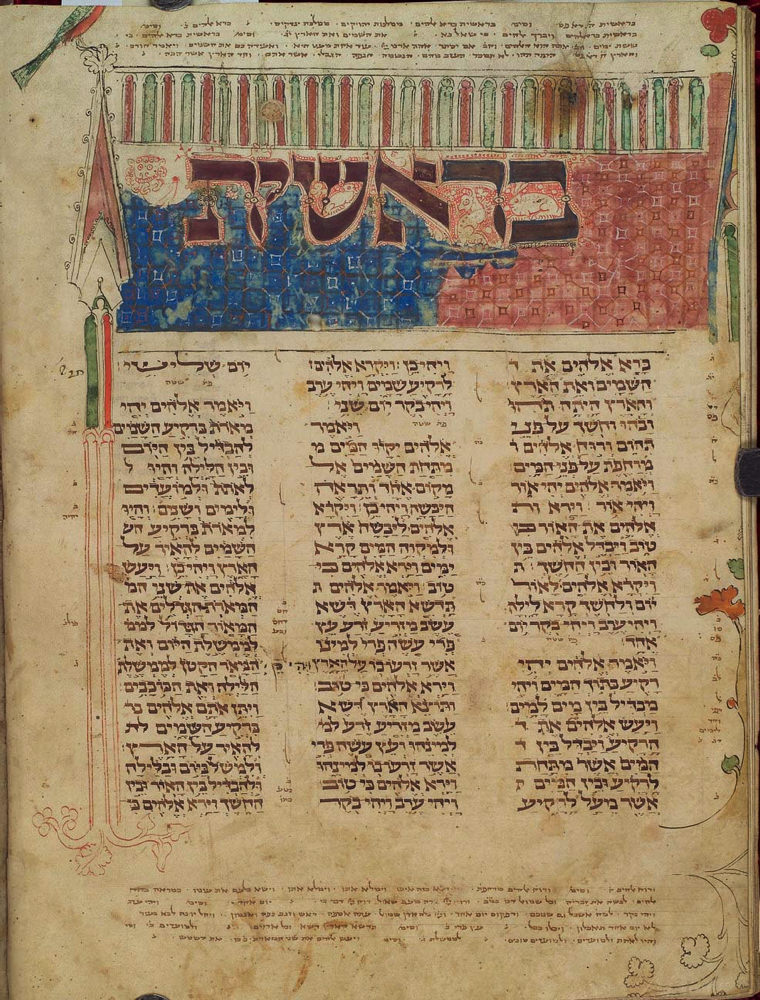
First page of the book of Genesis from the Xanten Bible, an illuminated Tanakh (Hebrew Bible) completed by the scribe Joseph ben Kalonymus in 1294
Photograph by New York Public Library Digital Collections
He teaches, for example, a seminar on “Peripheral Modernisms” that flips the normal allocation of class time to ask how the story of modernism changes when Brazilian and East Asian writers become the focus, with European writers presented as context, or when Indonesian writer Pramoedya Ananta Toer is read at length and James Joyce studied only through a handful of short stories. He writes in his foreword to Teaching World Literature, “World literature surveys can never hope to cover the world. We do better if we seek to uncover a variety of compelling works from distinctive traditions, through creative combinations and juxtapositions guided by whatever specific themes and issues we wish to raise in a particular course.”
Damrosch says the number of undergraduates taking classes and concentrating in literature has risen modestly, bucking the trend across the humanities: “Our own enrollments are holding steady and have actually been increasing over the last several years, in part because we’re quite enthusiastic about general education…An increasing number of our concentrators are doing joint degrees with [departments like] physics or statistics, as well as with other literatures or arts. You get very smart students from a major like biochemistry who are not afraid to ask very basic questions about a text. They’re excellent students, and they read with great enthusiasm and care.” He sees this as a spur to re-evaluate the role of his field in students’ educations: knowledge of literature, he suggests, offers less cultural prestige to today’s undergraduates than it once did, so faculty members “need to explain what we’re doing and justify it. And then it can relate to the rest of their lives. It doesn’t have to be the [only] thing they do.”
Damrosch is sanguine about the future of the field. “I think that globalization has been on balance a positive challenge for comparative studies,” he avers, “opening up new possibilities and new problems of competence….”
Damrosch is sanguine about the future of the field at large, as well. “I personally think it’s the most exciting time in comparative literature since the 1870s, when they were really hashing out what the discipline was going to be,” he avers. “I think that globalization has been on balance a positive challenge for comparative studies, opening up new possibilities and also new problems of competence, language, and politics...Many more people are thinking globally, [including] professors of French or of English—but now their work has a global dimension, so it makes sense to have comp lit as a place to air their views.”
He also feels the times have reinvigorated the field’s sense that it is trying to find ways to address real-world problems: “Comparatists were always trying to save the world. In the years after the Second World War, that took the form of trying to put Europe back together. Now we increasingly find people working on issues [like] migration, diaspora, ecocriticism, medical humanities.” He mentions the ever-broadening linguistic range of the department’s core faculty, which now includes Polish, Malaysian, Wolof, and Korean. A current graduate student is, to the best of his knowledge, the first scholar to draw together Spanish, Mayan, and Basque literature in one study. “She may be the only person in the world who’s a specialist in those three things. And she’s doing fantastically interesting work.”
Damrosch himself is finishing a book, tentatively titled Comparing the Literatures: What Every Comparatist Needs to Know. “A lot of my polemic is against picking sides narrowly and saying, ‘The kind of comp lit I do is the only kind to do,’ which I think is just self-defeating and unnecessary.” He envisions the department as a nexus for approaches from different languages and methods. “What’s really good is that comparatists today have the benefit of the theory boom of the 1970s and the postcolonial studies that rose in the 1980s, and we still have very seriously engaged work on the theory of literature that people like Emily Apter and my colleague John Hamilton [Kenan professor of German and comparative literature] do. At the same time, comp lit is opening to the broader world.”
He remains confident that the study of literature has a role to play in understanding and mending the world: “Literature is not a simple mirror reflecting; rather, it refracts the culture from which it comes. But it provides a way to think deeply—it’s a little bit like the slow food movement in a world of fast foods. To read deeply and attentively a rich work of literature gives us a unique way of thinking about ourselves and our place in the world.”

